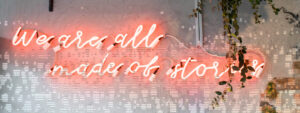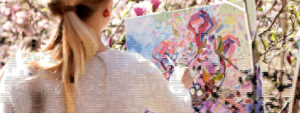Understanding Sketching as the Foundation of Creativity

What’s a Sketch Anyway?
In simple terms, a sketch is a quick, rough, and spontaneous drawing. Sketching is used to capture ideas in fun but effective ways.
A sketch is like the scribbles of our creative thoughts, often captured in haste but bursting with energy.
Leonardo da Vinci’s sketchbooks are a prime example of how these seemingly random lines can unlock profound artistic brilliance.
The Role of Sketching in the Artistic Process
Think of sketching as a creative warm-up exercise before diving into your main artwork.
Sketching is the first step to transforming abstract ideas into tangible forms.
Most of the time our sketches don’t turn into final pieces, but it’s during this experimental phase that we uncover hidden gems and find new and unique directions for our art.
Advantages of Traditional Sketching

Getting Hands-On with Traditional Sketching
There’s something magical about the tactile experience of traditional sketching.
Feeling the graphite glide on paper or the softness of charcoal as it blends brings us closer to our art.
As we develop hand-eye coordination and motor skills, our connection with the medium grows stronger, allowing us to control our lines with greater precision which is not to be confused with working on our line quality but more along the lines of working on your speed.
I talk about the importance of getting some high-quality sketching pencils in “5 Must-Have Tools for Traditional Artists“, check it out if you haven’t already.
Embracing the Beauty of Imperfections
One of the joys of traditional sketching is embracing imperfections. There’s a charming rawness in every smudged line or unintended flourish.
These quirks tell a story, revealing the artist’s emotions and thoughts at that very moment.
So, don’t be afraid to let go of perfection and let your sketches speak with their unique voice.
Benefits of Digital Sketching

Unleashing the Power of Digital Tools
With the advancement of technology, digital sketching has become an art form on its own.
From the limitless array of brushes and colors to the ease of undoing and redoing, digital tools empower us to experiment without hesitation.
It’s like having a digital playground at our fingertips without worrying about going through reams of paper and pencils.
Iterative Process Made Easy
Sketching digitally allows us to explore numerous iterations effortlessly.
We can create multiple layers, trying out various concepts without losing the initial idea.
This iterative process is a boon for refining our sketches and arriving at the perfect composition.
I discuss some options for software like Adobe Photoshop and Procreate in, “10 Essential Tips for Digital Artists Just Starting Out“, give it a read.
Sketching Techniques for Artists

Sketching as a Preliminary Planning Phase
Before starting any complex piece, I love sketching a rough plan using thumbnails.
It helps me visualize the overall composition, proportions, and focal points.
Sketching can also help me work out contrast and where I might consider a light source.
This approach saves time and minimizes frustration during the final illustration phase.
Gesture Drawing for Capturing Dynamic Poses
To infuse life into characters or creatures, gesture drawing is a must.
Gesture drawing is a form of sketching – capturing the essence of movement and rhythm with quick, flowing lines.
Gesture sketches bring dynamism to our art, making characters leap off the page with energy.
Tips for Improving Sketching Skills
1. Sketch Daily, Even if It’s Just a Doodle
Practice makes progress, so sketch daily, even if it’s just a tiny doodle. Set aside a few minutes each day to explore new subjects or refine your favorite ones. Consistent practice hones your observation skills and muscle memory.
2. Embrace Mistakes as Learning Opportunities
Don’t be afraid to make mistakes. Embrace errors as valuable learning opportunities. Every errant line or misplaced stroke teaches us something new about our art. Remember, even famous artists made mistakes – they just knew how to turn them into brilliance.
3. Experiment with Different Sketching Tools
Try out various sketching tools, both traditional and digital, to find what suits you best. Different tools offer distinct textures, effects, and experiences. Whether you use pen and ink, charcoal, or digital brushes, each medium has something unique to offer.
4. Seek Inspiration from Other Artists’ Sketchbooks
Look at the sketchbooks of your favorite artists. Observe their thought processes and techniques. This glimpse into their creative journey can inspire you to explore new avenues in your sketches.
5. Join Sketching Communities and Challenges
Engage with fellow artists in sketching communities and take part in sketching challenges. Sharing your work and receiving feedback fosters growth and motivation. Plus, it’s a great way to make friends who share your passion for art.
Final Thoughts
You have now unlocked the secrets of sketching and discovered some fabulous tips for improving sketching skills along the way.
Sketching bridges the gap between your imagination and reality, helping you grow as an artist.
So, whether you prefer traditional or digital mediums, keep sketching, exploring, and creating. Let your sketches be the sparks that ignite your artistic brilliance. Happy sketching!




